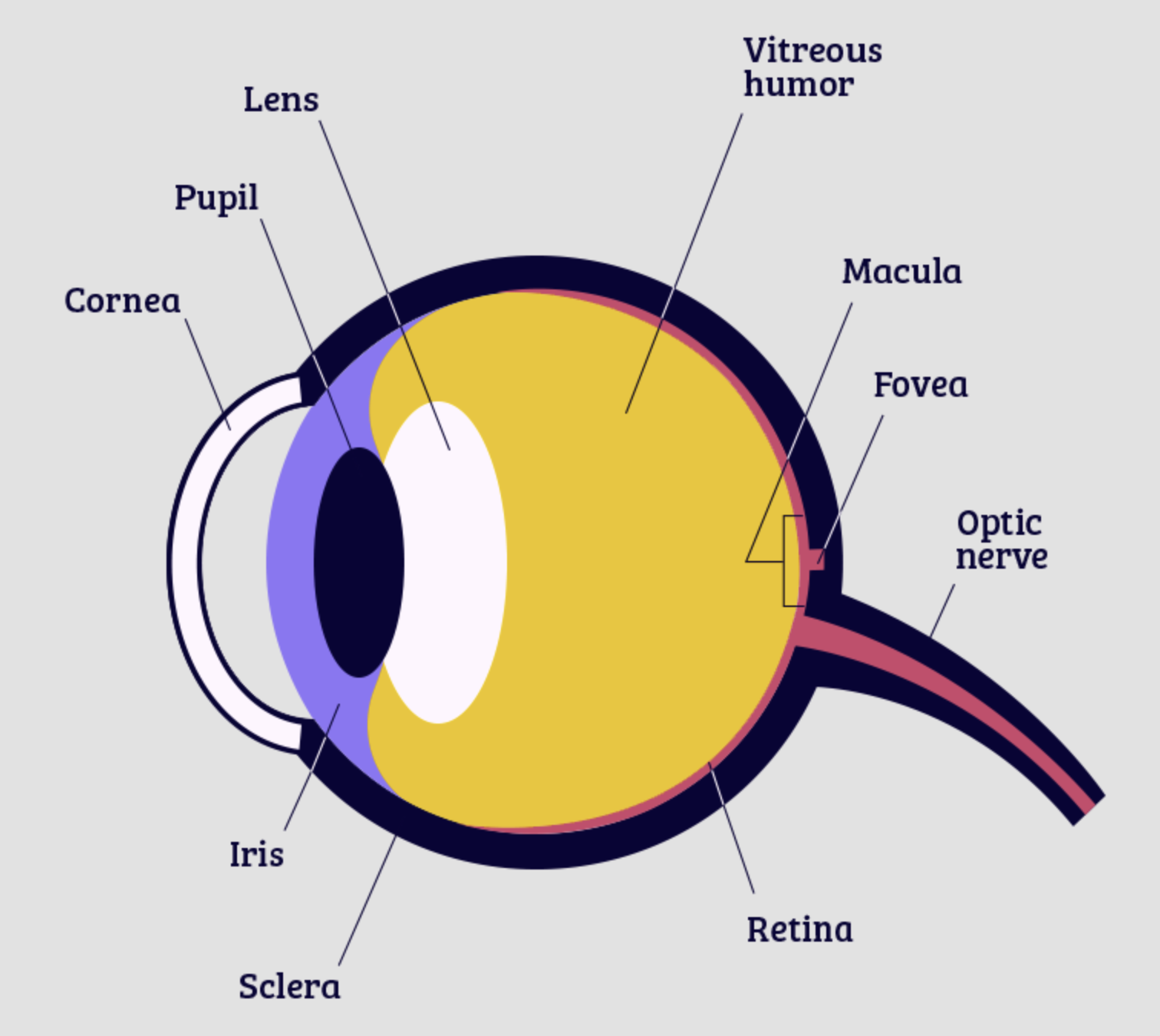
Your eyes are made up of many different parts that work together to help you see. Check out the diagrams below to learn about each part of your eye and what it does.


Macula (MACK-yoo-luh) is the small, sensitive area of the retina needed for central vision. It contains the fovea.
Lens is the clear part of the eye behind the iris that helps to focus light on the retina. It allows the eye to focus on both far and near objects.
Iris is the colored part of the eye. It regulates the amount of light entering the eye through the pupil.
Pupil (PYOO-pul) is the opening at the center of the iris. The iris adjusts the size of the pupil and controls the amount of light that can enter the eye.
Cornea (KOR-nee-uh) is the clear dome covering the front of your eye. It helps your eye focus light so things look sharp and clear.
Sclera (SKLEH-ruh) is the white outer coating of the eye.
Vitreous humor (VIT-ree-us HYOO-mer) is the clear gel that fills the inside of the eye.
Fovea (FOH-vee-uh) is the center of the macula, where your vision is sharpest.
Optic nerve (OP-tic nurv) is the bundle of more than 1 million nerve fibers that carry visual messages from the retina to the brain.
Retina (REH-tin-uh) is the light-sensitive tissue lining the back of the eyeball. It sends electrical impulses through the optic nerve to the brain.

